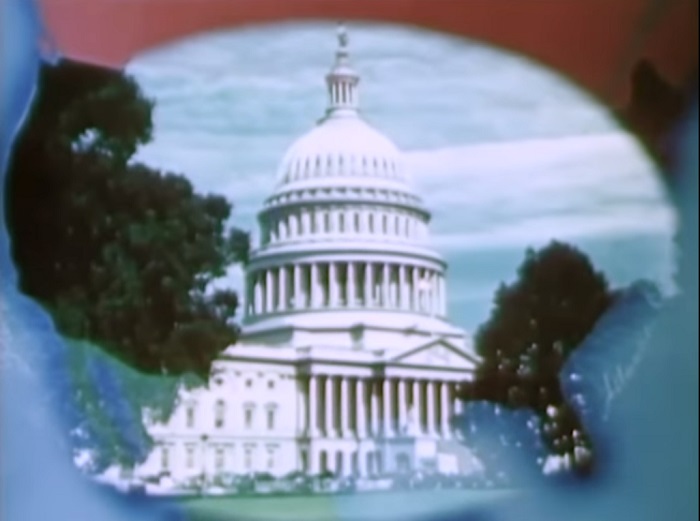
Still from The Power Behind the Nation, via YouTube.
United States
English
00:39:00
1400 ft
16mm
Kodachrome
Optical
Sound on film.
"Bituminous coal is the major actor in The Power Behind the Nation. This sound on film color movie, made by Waldo E. Austin for the Norfolk and Western Railway Company, shows effectively the tremendous part played by soft coal in the development of the nation. The picture is well filmed and thoroughly integrated by an excellent narrative, while lead and end titles are appropriately double exposed on shots of moving trains, which serve to drive home the point that the railroad is the important link between the mine and the consumer. Exceedingly fine sequences of coal mining and well handled shots of the railroad equipment are high points. This film is a fine example of an industrial motion picture produced without the excessive equipment and appropriations sometimes thought to be necessary for such an effort. " Movie Makers, Dec. 1940, 604.
Discussed in "16mm. Business Movies" (American Cinematographer, Feb. 1942, 76).
N&W Railway Collection, Virginia Museum of Transportation
"A detailed presentation of the uses, mining and processing, and railway transportation of bituminous coal in the Appalachian region. The film begins with a sequence which depicts the industrial might of the United States, explaining that bituminous coal furnishes more than 50% of America's energy. It refers to the chemical processing of coal, showing products and by-products obtained. Next, the film explains the necessity for close interrelation between the coal and railroad industries. The nature, formation and mining of bituminous coal are shown in the following scenes. A map locates coal deposits in the United States: then the Appalachian coal field is shown, with the lines of the Norfolk and Western Railway superimposed upon it by animation. In one of the hundreds of mines which dot the mountains, details of the work of coal mining are shown, including scenes of the miners riding to work down the shaft, testing the air for gases, undercutting by machine, trimming the face, drilling, blasting, and loading the coal. The cars go up to the surface, then up the tipple, where the coal is dumped. It goes down over sizing screens, to the picking table where slag is removed, and finally through the loading booms into railway cars. The next sequence shows in detail the method by which coal is handled through the great ocean coaling terminal at Norfolk, Virginia. A freighter is moved up to the pier; coal cars go slowly down an incline, across a scale, through a thawing shed, onto the elevator, and finally the coal is dumped through a chute into the ship. As the film concludes, the narrator states that the United States can look with satisfaction upon its stores of coal, and that the Norfolk and Western Railway is proud of its part in supplying this essential material for the life of the nation." The Educational Screen, April 1941, 179.